The ability to photograph Saturn:
1. 3D Printer (see below)
2. Vinyl record
3. Playing
The adventure of our advancement in the machine to develop more than a photograph has delivered the most amazing record to hear the planet itself at its height. As sound carries on our planet the description of sound to ground earth and or core can be identified without ever setting foot to that planet in our solar system.
This can also be in consideration to our own Earth core. This excitement of listening would develop how far words carry to the tone of simply a pin drop as our example to laboratory can be tested in actual technician to the absorption of tone (math).
As the Redwood:
3D printing
This article has multiple issues. Please help improve it or discuss these issues on the talk page. (Learn how and when to remove these template messages)
|
A three-dimensional printer
| Part of a series on the | ||||||||||||||||||||||||||||||||||||||||||||||||||||||
| History of printing | ||||||||||||||||||||||||||||||||||||||||||||||||||||||
|---|---|---|---|---|---|---|---|---|---|---|---|---|---|---|---|---|---|---|---|---|---|---|---|---|---|---|---|---|---|---|---|---|---|---|---|---|---|---|---|---|---|---|---|---|---|---|---|---|---|---|---|---|---|---|
 | ||||||||||||||||||||||||||||||||||||||||||||||||||||||
|
||||||||||||||||||||||||||||||||||||||||||||||||||||||
The most-commonly used 3D-printing process (46% as of 2018) is a material extrusion technique called fused deposition modeling (FDM).[4] While FDM technology was invented after the other two most popular technologies, stereolithography (SLA) and selective laser sintering (SLS), FDM is typically the most inexpensive of the three by a large margin, which lends to the popularity of the process.
Terminology
The umbrella term additive manufacturing (AM) gained popularity in the 2000s,[5] inspired by the theme of material being added together (in any of various ways). In contrast, the term subtractive manufacturing appeared as a retronym for the large family of machining processes with material removal as their common theme. The term 3D printing still referred only to the polymer technologies in most minds, and the term AM was more likely to be used in metalworking and end use part production contexts than among polymer, ink-jet, or stereo lithography enthusiasts.By early 2010s, the terms 3D printing and additive manufacturing evolved senses in which they were alternate umbrella terms for additive technologies, one being used in popular language by consumer-maker communities and the media, and the other used more formally by industrial end-use part producers, machine manufacturers, and global technical standards organizations. Until recently, the term 3D printing has been associated with machines low in price or in capability.[6] 3D printing and additive manufacturing reflect that the technologies share the theme of material addition or joining throughout a 3D work envelope under automated control. Peter Zelinski, the editor-in-chief of Additive Manufacturing magazine, pointed out in 2017 that the terms are still often synonymous in casual usage[7] but some manufacturing industry experts are trying to make a distinction whereby Additive Manufacturing comprises 3D printing plus other technologies or other aspects of a manufacturing process.[7]
Other terms that have been used as synonyms or hypernyms have included desktop manufacturing, rapid manufacturing (as the logical production-level successor to rapid prototyping), and on-demand manufacturing (which echoes on-demand printing in the 2D sense of printing). Such application of the adjectives rapid and on-demand to the noun manufacturing was novel in the 2000s reveals the prevailing mental model of the long industrial era in which almost all production manufacturing involved long lead times for laborious tooling development. Today, the term subtractive has not replaced the term machining, instead complementing it when a term that covers any removal method is needed. Agile tooling is the use of modular means to design tooling that is produced by additive manufacturing or 3D printing methods to enable quick prototyping and responses to tooling and fixture needs. Agile tooling uses a cost-effective and high-quality method to quickly respond to customer and market needs, and it can be used in hydro-forming, stamping, injection molding and other manufacturing processes.
History
1970s
In 1974, David E. H. Jones laid out the concept of 3D printing in his regular column Ariadne in the journal New Scientist.[8][9]1980s
Early additive manufacturing equipment and materials were developed in the 1980s.[10] In 1981, Hideo Kodama of Nagoya Municipal Industrial Research Institute invented two additive methods for fabricating three-dimensional plastic models with photo-hardening thermoset polymer, where the UV exposure area is controlled by a mask pattern or a scanning fiber transmitter.[11][12]On July 2, 1984, American entrepreneur Bill Masters filed a patent for his Computer Automated Manufacturing Process and System (US 4665492).[13] This filing is on record at the USPTO as the first 3D printing patent in history; it was the first of three patents belonging to Masters that laid the foundation for the 3D printing systems used today.[14][15]
On 16 July 1984, Alain Le Méhauté, Olivier de Witte, and Jean Claude André filed their patent for the stereolithography process.[16] The application of the French inventors was abandoned by the French General Electric Company (now Alcatel-Alsthom) and CILAS (The Laser Consortium).[17] The claimed reason was "for lack of business perspective".[18]
Three weeks later in 1984, Chuck Hull of 3D Systems Corporation[19] filed his own patent for a stereolithography fabrication system, in which layers are added by curing photopolymers with ultraviolet light lasers. Hull defined the process as a "system for generating three-dimensional objects by creating a cross-sectional pattern of the object to be formed,".[20][21] Hull's contribution was the STL (Stereolithography) file format and the digital slicing and infill strategies common to many processes today.
In 1986, Charles "Chuck" Hull was granted a patent for his system, and his company, 3D Systems Corporation released the first commercial 3D printer, the SLA-1.[22]
The technology used by most 3D printers to date—especially hobbyist and consumer-oriented models—is fused deposition modeling, a special application of plastic extrusion, developed in 1988 by S. Scott Crump and commercialized by his company Stratasys, which marketed its first FDM machine in 1992.
1990s
AM processes for metal sintering or melting (such as selective laser sintering, direct metal laser sintering, and selective laser melting) usually went by their own individual names in the 1980s and 1990s. At the time, all metalworking was done by processes that are now called non-additive (casting, fabrication, stamping, and machining); although plenty of automation was applied to those technologies (such as by robot welding and CNC), the idea of a tool or head moving through a 3D work envelope transforming a mass of raw material into a desired shape with a toolpath was associated in metalworking only with processes that removed metal (rather than adding it), such as CNC milling, CNC EDM, and many others. But the automated techniques that added metal, which would later be called additive manufacturing, were beginning to challenge that assumption. By the mid-1990s, new techniques for material deposition were developed at Stanford and Carnegie Mellon University, including microcasting[23] and sprayed materials.[24] Sacrificial and support materials had also become more common, enabling new object geometries.[25]The term 3D printing originally referred to a powder bed process employing standard and custom inkjet print heads, developed at MIT by Emanuel Sachs in 1993 and commercialized by Soligen Technologies, Extrude Hone Corporation, and Z Corporation.[citation needed]
The year 1993 also saw the start of a company called Solidscape, introducing a high-precision polymer jet fabrication system with soluble support structures, (categorized as a "dot-on-dot" technique).
In 1995 the Fraunhofer Society developed the selective laser melting process.
2000s
Fused Deposition Modeling (FDM) printing process patents expired in 2009.[26]2010s
As the various additive processes matured, it became clear that soon metal removal would no longer be the only metalworking process done through a tool or head moving through a 3D work envelope, transforming a mass of raw material into a desired shape layer by layer. The 2010s were the first decade in which metal end use parts such as engine brackets[27] and large nuts[28] would be grown (either before or instead of machining) in job production rather than obligately being machined from bar stock or plate. It is still the case that casting, fabrication, stamping, and machining are more prevalent than additive manufacturing in metalworking, but AM is now beginning to make significant inroads, and with the advantages of design for additive manufacturing, it is clear to engineers that much more is to come.As technology matured, several authors had begun to speculate that 3D printing could aid in sustainable development in the developing world.[29]
In 2012, Filabot developed a system for closing the loop[30] with plastic and allows for any FDM or FFF 3D printer to be able to print with a wider range of plastics.
In 2014, Benjamin S. Cook and Manos M. Tentzeris demonstrate the first multi-material, vertically integrated printed electronics additive manufacturing platform (VIPRE) which enabled 3D printing of functional electronics operating up to 40 GHz.[31]
The term "3D printing" originally referred to a process that deposits a binder material onto a powder bed with inkjet printer heads layer by layer. More recently, the popular vernacular has started using the term to encompass a wider variety of additive-manufacturing techniques such as electron-beam additive manufacturing and selective laser melting. The United States and global technical standards use the official term additive manufacturing for this broader sense.
General principles
Modeling
CAD model used for 3D printing
3D models can be generated from 2D pictures taken at a 3D photo booth.
CAD models can be saved in the stereolithography file format (STL), a de facto CAD file format for additive manufacturing that stores data based on triangulations of the surface of CAD models. STL is not tailored for additive manufacturing because it generates large file sizes of topology optimized parts and lattice structures due to the large number of surfaces involved. A newer CAD file format, the Additive Manufacturing File format (AMF) was introduced in 2011 to solve this problem. It stores information using curved triangulations.[33]
Printing
Before printing a 3D model from an STL file, it must first be examined for errors. Most CAD applications produce errors in output STL files,[34][35] of the following types:- holes;
- faces normals;
- self-intersections;
- noise shells;
- manifold errors.[36]
Once completed, the STL file needs to be processed by a piece of software called a "slicer," which converts the model into a series of thin layers and produces a G-code file containing instructions tailored to a specific type of 3D printer (FDM printers).[41] This G-code file can then be printed with 3D printing client software (which loads the G-code, and uses it to instruct the 3D printer during the 3D printing process).
Printer resolution describes layer thickness and X–Y resolution in dots per inch (dpi) or micrometers (µm). Typical layer thickness is around 100 μm (250 DPI), although some machines can print layers as thin as 16 μm (1,600 DPI).[42] X–Y resolution is comparable to that of laser printers. The particles (3D dots) are around 50 to 100 μm (510 to 250 DPI) in diameter.[citation needed] For that printer resolution, specifying a mesh resolution of 0.01–0.03 mm and a chord length ≤ 0.016 mm generate an optimal STL output file for a given model input file.[43] Specifying higher resolution results in larger files without increase in print quality.
3:31 Timelapse of an 80-minute video of an object being made out of PLA using molten polymer deposition
Finishing
Though the printer-produced resolution is sufficient for many applications, greater accuracy can be achieved by printing a slightly oversized version of the desired object in standard resolution and then removing material using a higher-resolution subtractive process.[44]The layered structure of all Additive Manufacturing processes leads inevitably to a stair-stepping effect on part surfaces which are curved or tilted in respect to the building platform. The effects strongly depend on the orientation of a part surface inside the building process.[45]
Some printable polymers such as ABS, allow the surface finish to be smoothed and improved using chemical vapor processes[46] based on acetone or similar solvents.
Some additive manufacturing techniques are capable of using multiple materials in the course of constructing parts. These techniques are able to print in multiple colors and color combinations simultaneously, and would not necessarily require painting.
Some printing techniques require internal supports to be built for overhanging features during construction. These supports must be mechanically removed or dissolved upon completion of the print.
All of the commercialized metal 3D printers involve cutting the metal component off the metal substrate after deposition. A new process for the GMAW 3D printing allows for substrate surface modifications to remove aluminum[47] or steel.[48]
Materials
Traditionally, 3D printing focused on polymers for printing, due to the ease of manufacturing and handling polymeric materials. However, the method has rapidly evolved to not only print various polymers[49] but also metals[50][51] and ceramics,[52] making 3D printing a versatile option for manufacturing.Multi-material 3D printing
A multi-material 3D printed toy.
The process can be fraught with complications, however, due to the isolated and monolithic algorithms. Some commercial devices have sought to solve these issues, such as building a Spec2Fab translator, but the progress is still very limited.[53] Nonetheless, in the medical industry, a concept of 3D printed pills and vaccines has been presented.[54] With this new concept, multiple medications can be combined, which will decrease many risks. With more and more applications of multi-material 3D printing, the costs of daily life and high technology development will become inevitably lower.
Metallographic materials of 3D printing is also being researched.[55] By classifying each material, CIMP-3D can systematically perform 3D printing with multiple materials.[56]
Processes and printers
This section should include only a brief summary of 3D printing processes. (August 2017)
|
- Vat photopolymerization
- Material jetting
- Binder jetting
- Powder bed fusion
- Material extrusion
- Directed energy deposition
- Sheet lamination
Schematic representation of the 3D printing technique known as Fused Filament Fabrication; a filament a) of plastic material is fed through a heated moving head b) that melts and extrudes it depositing it, layer after layer, in the desired shape c). A moving platform e) lowers after each layer is deposited. For this kind of technology additional vertical support structures d) are needed to sustain overhanging parts
A timelapse video of a robot model being printed using FDM
ISO/ASTM52900-15 defines seven categories of Additive Manufacturing (AM) processes within its meaning: binder jetting, directed energy deposition, material extrusion, material jetting, powder bed fusion, sheet lamination, and vat photopolymerization.[61]
Some methods melt or soften the material to produce the layers. In Fused filament fabrication, also known as Fused deposition modeling (FDM), the model or part is produced by extruding small beads or streams of material which harden immediately to form layers. A filament of thermoplastic, metal wire, or other material is fed into an extrusion nozzle head (3D printer extruder), which heats the material and turns the flow on and off. FDM is somewhat restricted in the variation of shapes that may be fabricated. Another technique fuses parts of the layer and then moves upward in the working area, adding another layer of granules and repeating the process until the piece has built up. This process uses the unfused media to support overhangs and thin walls in the part being produced, which reduces the need for temporary auxiliary supports for the piece.[62] Recently, FFF/FDM has expanded to 3-D print directly from pellets to avoid the conversion to filament. This process is called fused particle fabrication (FPF) (or fused granular fabrication (FGF) and has the potential to use more recycled materials.[63]
Powder Bed Fusion techniques, or PBF, include several processes such as DMLS, SLS, SLM, MJF and EBM. Powder Bed Fusion processes can be used with an array of materials and their flexibility allows for geometrically complex structures,[64] making it a go to choice for many 3D printing projects. These techniques include selective laser sintering, with both metals and polymers, and direct metal laser sintering.[65] Selective laser melting does not use sintering for the fusion of powder granules but will completely melt the powder using a high-energy laser to create fully dense materials in a layer-wise method that has mechanical properties similar to those of conventional manufactured metals. Electron beam melting is a similar type of additive manufacturing technology for metal parts (e.g. titanium alloys). EBM manufactures parts by melting metal powder layer by layer with an electron beam in a high vacuum.[66][67] Another method consists of an inkjet 3D printing system, which creates the model one layer at a time by spreading a layer of powder (plaster, or resins) and printing a binder in the cross-section of the part using an inkjet-like process. With laminated object manufacturing, thin layers are cut to shape and joined together. In addition to the previously mentioned methods, HP has developed the Multi Jet Fusion (MJF) which is a powder base technique, though no laser are involved. An inkjet array applies fusing and detailing agents which are then combined by heating to create a solid layer.[68]
Schematic representation of Stereolithography; a light-emitting device a) (laser or DLP) selectively illuminate the transparent bottom c) of a tank b) filled with a liquid photo-polymerizing resin; the solidified resin d) is progressively dragged up by a lifting platform e)
In Mask-image-projection-based stereolithography, a 3D digital model is sliced by a set of horizontal planes. Each slice is converted into a two-dimensional mask image. The mask image is then projected onto a photocurable liquid resin surface and light is projected onto the resin to cure it in the shape of the layer.[72] Continuous liquid interface production begins with a pool of liquid photopolymer resin. Part of the pool bottom is transparent to ultraviolet light (the "window"), which causes the resin to solidify. The object rises slowly enough to allow resin to flow under and maintain contact with the bottom of the object.[73] In powder-fed directed-energy deposition, a high-power laser is used to melt metal powder supplied to the focus of the laser beam. The powder fed directed energy process is similar to Selective Laser Sintering, but the metal powder is applied only where material is being added to the part at that moment.[74][75]
As of December 2017, additive manufacturing systems were on the market that ranged from $99 to $500,000 in price and were employed in industries including aerospace, architecture, automotive, defense, and medical replacements, among many others. For example, General Electric uses high-end 3D Printers to build parts for turbines.[76] Many of these systems are used for rapid prototyping, before mass production methods are employed. Higher education has proven to be a major buyer of desktop and professional 3D printers which industry experts generally view as a positive indicator.[77] Libraries around the world have also become locations to house smaller 3D printers for educational and community access.[78] Several projects and companies are making efforts to develop affordable 3D printers for home desktop use. Much of this work has been driven by and targeted at DIY/Maker/enthusiast/early adopter communities, with additional ties to the academic and hacker communities.[79]
Computed axial lithography is a method for 3D printing based on computerised tomography scans to create prints in photo-curable resin. It was developed by a collaboration between the University of California, Berkeley with Lawrence Livermore National Laboratory.[80][81][82] Unlike other methods of 3D printing it does not build models through depositing layers of material like fused deposition modelling and stereolithography, instead it creates objects using a series of 2D images projected onto a cylinder of resin.[80][82] It is notable for its ability to build an object much more quickly than other methods using resins and the ability to embed objects within the prints.[81]
Liquid additive manufacturing (LAM) is a 3D printing technique which deposits a liquid or high viscose material (e.g. Liquid Silicone Rubber) onto a build surface to create an object which then is vulcanised using heat to harden the object.[83][84][85] The process was originally created by Adrian Bowyer and was then built upon by German RepRap.[83][86][87]
Applications
A 3D selfie in 1:20 scale printed using gypsum-based printing
A 3D printed jet engine model
3D printed enamelled pottery
3D printed sculpture of an Egyptian Pharaoh shown at Threeding
Additive manufacturing of food is being developed by squeezing out food, layer by layer, into three-dimensional objects. A large variety of foods are appropriate candidates, such as chocolate and candy, and flat foods such as crackers, pasta,[91] and pizza.[92][93] NASA is looking into the technology in order to create 3D printed food to limit food waste and to make food that are designed to fit an astronaut's dietary needs.[94] In 2018, Italian bioengineer Giuseppe Scionti developed a technology allowing to generate fibrous plant-based meat analogues using a custom 3D bioprinter, mimicking meat texture and nutritional values.[95][96]
3D printing has entered the world of clothing, with fashion designers experimenting with 3D-printed bikinis, shoes, and dresses.[97] In commercial production Nike is using 3D printing to prototype and manufacture the 2012 Vapor Laser Talon football shoe for players of American football, and New Balance is 3D manufacturing custom-fit shoes for athletes.[97][98] 3D printing has come to the point where companies are printing consumer grade eyewear with on-demand custom fit and styling (although they cannot print the lenses). On-demand customization of glasses is possible with rapid prototyping.[99]
Vanessa Friedman, fashion director and chief fashion critic at The New York Times, says 3D printing will have a significant value for fashion companies down the road, especially if it transforms into a print-it-yourself tool for shoppers. "There's real sense that this is not going to happen anytime soon," she says, "but it will happen, and it will create dramatic change in how we think both about intellectual property and how things are in the supply chain." She adds: "Certainly some of the fabrications that brands can use will be dramatically changed by technology."[100]
In cars, trucks, and aircraft, Additive Manufacturing is beginning to transform both (1) unibody and fuselage design and production and (2) powertrain design and production. For example:
- In early 2014, Swedish supercar manufacturer Koenigsegg announced the One:1, a supercar that utilizes many components that were 3D printed.[101] Urbee is the name of the first car in the world car mounted using the technology 3D printing (its bodywork and car windows were "printed").[102][103][104]
- In 2014, Local Motors debuted Strati, a functioning vehicle that was entirely 3D Printed using ABS plastic and carbon fiber, except the powertrain.[105] In May 2015 Airbus announced that its new Airbus A350 XWB included over 1000 components manufactured by 3D printing.[106]
- In 2015, a Royal Air Force Eurofighter Typhoon fighter jet flew with printed parts. The United States Air Force has begun to work with 3D printers, and the Israeli Air Force has also purchased a 3D printer to print spare parts.[107]
- In 2017, GE Aviation revealed that it had used design for additive manufacturing to create a helicopter engine with 16 parts instead of 900, with great potential impact on reducing the complexity of supply chains.[108]
Surgical uses of 3D printing-centric therapies have a history beginning in the mid-1990s with anatomical modeling for bony reconstructive surgery planning. Patient-matched implants were a natural extension of this work, leading to truly personalized implants that fit one unique individual.[117] Virtual planning of surgery and guidance using 3D printed, personalized instruments have been applied to many areas of surgery including total joint replacement and craniomaxillofacial reconstruction with great success.[118] One example of this is the bioresorbable trachial splint to treat newborns with tracheobronchomalacia[119] developed at the University of Michigan. The use of additive manufacturing for serialized production of orthopedic implants (metals) is also increasing due to the ability to efficiently create porous surface structures that facilitate osseointegration. The hearing aid and dental industries are expected to be the biggest area of future development using the custom 3D printing technology.[120]
In March 2014, surgeons in Swansea used 3D printed parts to rebuild the face of a motorcyclist who had been seriously injured in a road accident.[121] In May 2018, 3D printing has been used for the kidney transplant to save a three-year-old boy.[122] As of 2012, 3D bio-printing technology has been studied by biotechnology firms and academia for possible use in tissue engineering applications in which organs and body parts are built using inkjet printing techniques. In this process, layers of living cells are deposited onto a gel medium or sugar matrix and slowly built up to form three-dimensional structures including vascular systems.[123] Recently, a heart-on-chip has been created which matches properties of cells.[124]
In 3D printing, computer-simulated microstructures are commonly used to fabricate objects with spatially varying properties. This is achieved by dividing the volume of the desired object into smaller subcells using computer aided simulation tools and then filling these cells with appropriate microstructures during fabrication. Several different candidate structures with similar behaviours are checked against each other and the object is fabricated when an optimal set of structures are found. Advanced topology optimization methods are used to ensure the compatibility of structures in adjacent cells. This flexible approach to 3D fabrication is widely used across various disciplines from biomedical sciences where they are used to create complex bone structures[125] and human tissue[126] to robotics where they are used in the creation of soft robots with movable parts.[127][128]
3D printing has also been employed by researchers in the pharmaceutical field. During the last few years there's been a surge in academic interest regarding drug delivery with the aid of AM techniques. This technology offers a unique way for materials to be utilized in novel formulations. One of the major advantages of 3D printing, is the personalization of the dosage form that can be achieved, thus, targeting the patient's specific needs[129]. In the not-so-distant future, 3D printers are expected to reach hospitals and pharmacies in order to provide on demand production of personalized formulations according to the patients' needs[130].
In 2018, 3D printing technology was used for the first time to create a matrix for cell immobilization in fermentation. Propionic acid production by Propionibacterium acidipropionici immobilized on 3D-printed nylon beads was chosen as a model study. It was shown that those 3D-printed beads were capable of promoting high density cell attachment and propionic acid production, which could be adapted to other fermentation bioprocesses.[131]
In 2005, academic journals had begun to report on the possible artistic applications of 3D printing technology.[132] As of 2017, domestic 3D printing was reaching a consumer audience beyond hobbyists and enthusiasts. Off the shelf machines were increasingly capable of producing practical household applications, for example, ornamental objects. Some practical examples include a working clock[133] and gears printed for home woodworking machines among other purposes.[134] Web sites associated with home 3D printing tended to include backscratchers, coat hooks, door knobs, etc.[135]
3D printing, and open source 3D printers in particular, are the latest technology making inroads into the classroom.[136][137][138] Some authors have claimed that 3D printers offer an unprecedented "revolution" in STEM education.[139][140] The evidence for such claims comes from both the low-cost ability for rapid prototyping in the classroom by students, but also the fabrication of low-cost high-quality scientific equipment from open hardware designs forming open-source labs.[141] Future applications for 3D printing might include creating open-source scientific equipment.[141][142]
In the last several years 3D printing has been intensively used by in the cultural heritage field for preservation, restoration and dissemination purposes.[143] Many Europeans and North American Museums have purchased 3D printers and actively recreate missing pieces of their relics.[144] The Metropolitan Museum of Art and the British Museum have started using their 3D printers to create museum souvenirs that are available in the museum shops.[145] Other museums, like the National Museum of Military History and Varna Historical Museum, have gone further and sell through the online platform Threeding digital models of their artifacts, created using Artec 3D scanners, in 3D printing friendly file format, which everyone can 3D print at home.[146]
3D printed soft actuators is a growing application of 3D printing technology which has found its place in the 3D printing applications. These soft actuators are being developed to deal with soft structures and organs especially in biomedical sectors and where the interaction between human and robot is inevitable. The majority of the existing soft actuators are fabricated by conventional methods that require manual fabrication of devices, post processing/assembly, and lengthy iterations until maturity of the fabrication is achieved. Instead of the tedious and time-consuming aspects of the current fabrication processes, researchers are exploring an appropriate manufacturing approach for effective fabrication of soft actuators. Thus, 3D printed soft actuators are introduced to revolutionise the design and fabrication of soft actuators with custom geometrical, functional, and control properties in a faster and inexpensive approach. They also enable incorporation of all actuator components into a single structure eliminating the need to use external joints, adhesives, and fasteners. Circuit board manufacturing involves multiple steps which include imaging, drilling, plating, soldermask coating, nomenclature printing and surface finishes. These steps include many chemicals such as harsh solvents and acids. 3D printing circuit boards remove the need for many of these steps while still producing complex designs.[147] Polymer ink is used to create the layers of the build while silver polymer is used for creating the traces and holes used to allow electricity to flow.[148] Current circuit board manufacturing can be a tedious process depending on the design. Specified materials are gathered and sent into inner layer processing where images are printed, developed and etched. The etches cores are typically punched to add lamination tooling. The cores are then prepared for lamination. The stack-up, the buildup of a circuit board, is built and sent into lamination where the layers are bonded. The boards are then measured and drilled. Many steps may differ from this stage however for simple designs, the material goes through a plating process to plate the holes and surface. The outer image is then printed, developed and etched. After the image is defined, the material must get coated with soldermask for later soldering. Nomenclature is then added so components can be identified later. Then the surface finish is added. The boards are routed out of panel form into their singular or array form and then electrically tested. Aside from the paperwork which must be completed which proves the boards meet specifications, the boards are then packed and shipped. The benefits of 3D printing would be that the final outline is defined from the beginning, no imaging, punching or lamination is required and electrical connections are made with the silver polymer which eliminates drilling and plating. The final paperwork would also be greatly reduced due to the lack of materials required to build the circuit board. Complex designs which may takes weeks to complete through normal processing can be 3D printed, greatly reducing manufacturing time.
Legal aspects
Intellectual property
3D printing has existed for decades within certain manufacturing industries where many legal regimes, including patents, industrial design rights, copyrights, and trademarks may apply. However, there is not much jurisprudence to say how these laws will apply if 3D printers become mainstream and individuals or hobbyist communities begin manufacturing items for personal use, for non-profit distribution, or for sale.Any of the mentioned legal regimes may prohibit the distribution of the designs used in 3D printing, or the distribution or sale of the printed item. To be allowed to do these things, where an active intellectual property was involved, a person would have to contact the owner and ask for a licence, which may come with conditions and a price. However, many patent, design and copyright laws contain a standard limitation or exception for 'private', 'non-commercial' use of inventions, designs or works of art protected under intellectual property (IP). That standard limitation or exception may leave such private, non-commercial uses outside the scope of IP rights.
Patents cover inventions including processes, machines, manufacturing, and compositions of matter and have a finite duration which varies between countries, but generally 20 years from the date of application. Therefore, if a type of wheel is patented, printing, using, or selling such a wheel could be an infringement of the patent.[149]
Copyright covers an expression[150] in a tangible, fixed medium and often lasts for the life of the author plus 70 years thereafter.[151] If someone makes a statue, they may have a copyright mark on the appearance of that statue, so if someone sees that statue, they cannot then distribute designs to print an identical or similar statue.
When a feature has both artistic (copyrightable) and functional (patentable) merits, when the question has appeared in US court, the courts have often held the feature is not copyrightable unless it can be separated from the functional aspects of the item.[151] In other countries the law and the courts may apply a different approach allowing, for example, the design of a useful device to be registered (as a whole) as an industrial design on the understanding that, in case of unauthorized copying, only the non-functional features may be claimed under design law whereas any technical features could only be claimed if covered by a valid patent.
Gun legislation and administration
The US Department of Homeland Security and the Joint Regional Intelligence Center released a memo stating that "significant advances in three-dimensional (3D) printing capabilities, availability of free digital 3D printable files for firearms components, and difficulty regulating file sharing may present public safety risks from unqualified gun seekers who obtain or manufacture 3D printed guns" and that "proposed legislation to ban 3D printing of weapons may deter, but cannot completely prevent, their production. Even if the practice is prohibited by new legislation, online distribution of these 3D printable files will be as difficult to control as any other illegally traded music, movie or software files."[152] Currently, it is not prohibited by law to manufacture firearms for personal use in the United States, as long as the firearm is not produced with the intent to be sold or transferred, and meets a few basic requirements. A license is required to manufacture firearms for sale or distribution. The law prohibits a person from assembling a non–sporting semiautomatic rifle or shotgun from 10 or more imported parts, as well as firearms that cannot be detected by metal detectors or x–ray machines. In addition, the making of an NFA firearm requires a tax payment and advance approval by ATF.[153]Attempting to restrict the distribution of gun plans via the Internet has been likened to the futility of preventing the widespread distribution of DeCSS, which enabled DVD ripping.[154][155][156][157] After the US government had Defense Distributed take down the plans, they were still widely available via the Pirate Bay and other file sharing sites.[158] Downloads of the plans from the UK, Germany, Spain, and Brazil were heavy.[159][160] Some US legislators have proposed regulations on 3D printers to prevent them from being used for printing guns.[161][162] 3D printing advocates have suggested that such regulations would be futile, could cripple the 3D printing industry, and could infringe on free speech rights, with early pioneer of 3D printing Professor Hod Lipson suggesting that gunpowder could be controlled instead.[163][164][165][166][167][168]
Internationally, where gun controls are generally stricter than in the United States, some commentators have said the impact may be more strongly felt since alternative firearms are not as easily obtainable.[169] Officials in the United Kingdom have noted that producing a 3D printed gun would be illegal under their gun control laws.[170] Europol stated that criminals have access to other sources of weapons but noted that as technology improves, the risks of an effect would increase.[171][172]
Aerospace regulation
In the United States, the FAA has anticipated a desire to use additive manufacturing techniques and has been considering how best to regulate this process.[173] The FAA has jurisdiction over such fabrication because all aircraft parts must be made under FAA production approval or under other FAA regulatory categories.[174] In December 2016, the FAA approved the production of a 3D printed fuel nozzle for the GE LEAP engine.[175] Aviation attorney Jason Dickstein has suggested that additive manufacturing is merely a production method, and should be regulated like any other production method.[176][177] He has suggested that the FAA's focus should be on guidance to explain compliance, rather than on changing the existing rules, and that existing regulations and guidance permit a company "to develop a robust quality system that adequately reflects regulatory needs for quality assurance."[176]Health and safety
It has been suggested that this section be split out into another article titled Health and safety hazards of 3D printing. (Discuss) (October 2018)
|
A video on research done on printer emissions
Hazards
Emissions
Emissions from fused filament printers can include a large number of ultrafine particles and volatile organic compounds (VOCs).[179][180][181] The toxicity from emissions varies by source material due to differences in size, chemical properties, and quantity of emitted particles.[179] Excessive exposure to VOCs can lead to irritation of the eyes, nose, and throat, headache, loss of coordination, and nausea and some of the chemical emissions of fused filament printers have also been linked to asthma.[179][182] Based on animal studies, carbon nanotubes and carbon nanofibers sometimes used in fused filament printing can cause pulmonary effects including inflammation, granulomas, and pulmonary fibrosis when at the nanoparticle size.[183] A National Institute for Occupational Safety and Health (NIOSH) study noted particle emissions from a fused filament peaked a few minutes after printing started and returned to baseline levels 100 minutes after printing ended.[179] Workers may also inadvertently transport materials outside the workplace on their shoes, garments, and body, which may pose hazards for other members of the public.[184]Carbon nanoparticle emissions and processes using powder metals are highly combustible and raise the risk of dust explosions.[185] At least one case of severe injury was noted from an explosion involved in metal powders used for fused filament printing.[186]
Other
Additional hazards include burns from hot surfaces such as lamps and print head blocks, exposure to laser or ultraviolet radiation, electrical shock, mechanical injury from being struck by moving parts, and noise and ergonomic hazards.[187][188] Other concerns involve gas and material exposures, in particular nanomaterials, material handling, static electricity, moving parts and pressures.[189]Hazards to health and safety also exist from post-processing activities done to finish parts after they have been printed. These post-processing activities can include chemical baths, sanding, polishing, or vapor exposure to refine surface finish, as well as general subtractive manufacturing techniques such as drilling, milling, or turning to modify the printed geometry.[190] Any technique that removes material from the printed part has the potential to generate particles that can be inhaled or cause eye injury if proper personal protective equipment is not used, such as respirators or safety glasses. Caustic baths are often used to dissolve support material used by some 3D printers that allows them to print more complex shapes. These baths require personal protective equipment to prevent injury to exposed skin.[188]
Since 3-D imaging creates items by fusing materials together, there runs the risk of layer separation in some devices made using 3-D Imaging. For example, in January 2013, the US medical device company, DePuy, recalled their knee and hip replacement systems. The devices were made from layers of metal, and shavings had come loose – potentially harming the patient.[191]
Hazard controls
3D printers with the manufacturer-provided plastic covers and doors installed, which are examples of engineering controls
Health regulation
Although no occupational exposure limits specific to 3D printer emissions exist, certain source materials used in 3D printing, such as carbon nanofiber and carbon nanotubes, have established occupational exposure limits at the nanoparticle size.[179][192]As of March 2018, the US Government has set 3D printer emission standards for only a limited number of compounds. Furthermore, the few established standards address factory conditions, not home or other environments in which the printers are likely to be used.[193]
Impact
Additive manufacturing, starting with today's infancy period, requires manufacturing firms to be flexible, ever-improving users of all available technologies to remain competitive. Advocates of additive manufacturing also predict that this arc of technological development will counter globalization, as end users will do much of their own manufacturing rather than engage in trade to buy products from other people and corporations.[10] The real integration of the newer additive technologies into commercial production, however, is more a matter of complementing traditional subtractive methods rather than displacing them entirely.[194]The futurologist Jeremy Rifkin[195] claimed that 3D printing signals the beginning of a third industrial revolution,[196] succeeding the production line assembly that dominated manufacturing starting in the late 19th century.
Social change
Since the 1950s, a number of writers and social commentators have speculated in some depth about the social and cultural changes that might result from the advent of commercially affordable additive manufacturing technology.[197] In recent years, 3D printing is creating significant impact in the humanitarian and development sector. Its potential to facilitate distributed manufacturing is resulting in supply chain and logistics benefits, by reducing the need for transportation, warehousing and wastage. Furthermore, social and economic development is being advanced through the creation of local production economies.[89]Others have suggested that as more and more 3D printers start to enter people's homes, the conventional relationship between the home and the workplace might get further eroded.[198] Likewise, it has also been suggested that, as it becomes easier for businesses to transmit designs for new objects around the globe, so the need for high-speed freight services might also become less.[199] Finally, given the ease with which certain objects can now be replicated, it remains to be seen whether changes will be made to current copyright legislation so as to protect intellectual property rights with the new technology widely available.
As 3D printers became more accessible to consumers, online social platforms have developed to support the community.[200] This includes websites that allow users to access information such as how to build a 3D printer, as well as social forums that discuss how to improve 3D print quality and discuss 3D printing news, as well as social media websites that are dedicated to share 3D models.[201][202][203] RepRap is a wiki based website that was created to hold all information on 3d printing, and has developed into a community that aims to bring 3D printing to everyone. Furthermore, there are other sites such as Pinshape, Thingiverse and MyMiniFactory, which were created initially to allow users to post 3D files for anyone to print, allowing for decreased transaction cost of sharing 3D files. These websites have allowed greater social interaction between users, creating communities dedicated to 3D printing.
Some call attention to the conjunction of Commons-based peer production with 3D printing and other low-cost manufacturing techniques.[204][205][206] The self-reinforced fantasy of a system of eternal growth can be overcome with the development of economies of scope, and here, society can play an important role contributing to the raising of the whole productive structure to a higher plateau of more sustainable and customized productivity.[204] Further, it is true that many issues, problems, and threats arise due to the democratization of the means of production, and especially regarding the physical ones.[204] For instance, the recyclability of advanced nanomaterials is still questioned; weapons manufacturing could become easier; not to mention the implications for counterfeiting[207] and on intellectual property.[208] It might be maintained that in contrast to the industrial paradigm whose competitive dynamics were about economies of scale, Commons-based peer production 3D printing could develop economies of scope. While the advantages of scale rest on cheap global transportation, the economies of scope share infrastructure costs (intangible and tangible productive resources), taking advantage of the capabilities of the fabrication tools.[204] And following Neil Gershenfeld[209] in that "some of the least developed parts of the world need some of the most advanced technologies," Commons-based peer production and 3D printing may offer the necessary tools for thinking globally but acting locally in response to certain needs.
Larry Summers wrote about the "devastating consequences" of 3D printing and other technologies (robots, artificial intelligence, etc.) for those who perform routine tasks. In his view, "already there are more American men on disability insurance than doing production work in manufacturing. And the trends are all in the wrong direction, particularly for the less skilled, as the capacity of capital embodying artificial intelligence to replace white-collar as well as blue-collar work will increase rapidly in the years ahead." Summers recommends more vigorous cooperative efforts to address the "myriad devices" (e.g., tax havens, bank secrecy, money laundering, and regulatory arbitrage) enabling the holders of great wealth to "a paying" income and estate taxes, and to make it more difficult to accumulate great fortunes without requiring "great social contributions" in return, including: more vigorous enforcement of anti-monopoly laws, reductions in "excessive" protection for intellectual property, greater encouragement of profit-sharing schemes that may benefit workers and give them a stake in wealth accumulation, strengthening of collective bargaining arrangements, improvements in corporate governance, strengthening of financial regulation to eliminate subsidies to financial activity, easing of land-use restrictions that may cause the real estate of the rich to keep rising in value, better training for young people and retraining for displaced workers, and increased public and private investment in infrastructure development—e.g., in energy production and transportation.[210]
Michael Spence wrote that "Now comes a ... powerful, wave of digital technology that is replacing labor in increasingly complex tasks. This process of labor substitution and disintermediation has been underway for some time in service sectors—think of ATMs, online banking, enterprise resource planning, customer relationship management, mobile payment systems, and much more. This revolution is spreading to the production of goods, where robots and 3D printing are displacing labor." In his view, the vast majority of the cost of digital technologies comes at the start, in the design of hardware (e.g. 3D printers) and, more important, in creating the software that enables machines to carry out various tasks. "Once this is achieved, the marginal cost of the hardware is relatively low (and declines as scale rises), and the marginal cost of replicating the software is essentially zero. With a huge potential global market to amortize the upfront fixed costs of design and testing, the incentives to invest [in digital technologies] are compelling."[211]
Spence believes that, unlike prior digital technologies, which drove firms to deploy underutilized pools of valuable labor around the world, the motivating force in the current wave of digital technologies "is cost reduction via the replacement of labor." For example, as the cost of 3D printing technology declines, it is "easy to imagine" that production may become "extremely" local and customized. Moreover, production may occur in response to actual demand, not anticipated or forecast demand. Spence believes that labor, no matter how inexpensive, will become a less important asset for growth and employment expansion, with labor-intensive, process-oriented manufacturing becoming less effective, and that re-localization will appear in both developed and developing countries. In his view, production will not disappear, but it will be less labor-intensive, and all countries will eventually need to rebuild their growth models around digital technologies and the human capital supporting their deployment and expansion. Spence writes that "the world we are entering is one in which the most powerful global flows will be ideas and digital capital, not goods, services, and traditional capital. Adapting to this will require shifts in mindsets, policies, investments (especially in human capital), and quite possibly models of employment and distribution."[211]
Naomi Wu regards the usage of 3D printing in the Chinese classroom (where rote memorization is standard) to teach design principles and creativity as the most exciting recent development of the technology, and more generally regards 3D printing as being the next desktop publishing revolution.[212]
Environmental change
The growth of additive manufacturing could have a large impact on the environment. As opposed to traditional manufacturing, for instance, in which pieces are cut from larger blocks of material, additive manufacturing creates products layer-by-layer and prints only relevant parts, wasting much less material and thus wasting less energy in producing the raw materials needed.[213] By making only the bare structural necessities of products, additive manufacturing also could make a profound contribution to lightweighting, reducing the energy consumption and greenhouse gas emissions of vehicles and other forms of transportation.[214] A case study on an airplane component made using additive manufacturing, for example, found that the component's use saves 63% of relevant energy and carbon dioxide emissions over the course of the product's lifetime.[215] In addition, previous life-cycle assessment of additive manufacturing has estimated that adopting the technology could further lower carbon dioxide emissions since 3D printing creates localized production, and products would not need to be transported long distances to reach their final destination.[216]Continuing to adopt additive manufacturing does pose some environmental downsides, however. Despite additive manufacturing reducing waste from the subtractive manufacturing process by up to 90%, the additive manufacturing process creates other forms of waste such as non-recyclable material powders. Additive manufacturing has not yet reached its theoretical material efficiency potential of 97%, but it may get closer as the technology continues to increase productivity.[217]
See also
- 3D modeling
- 3D scanning
- 3D Printing Marketplace
- 3D bioprinting
- 3D food printing
- 3D Manufacturing Format
- 3D Printing speed
- Additive Manufacturing File Format
- Actuator
- AstroPrint
- Cloud manufacturing
- Computer numeric control
- Delta robot
- Fusion3
- Laser cutting
- Limbitless Solutions
- List of 3D printer manufacturers
- List of common 3D test models
- List of emerging technologies
- List of notable 3D printed weapons and parts
- Magnetically assisted slip casting
- MakerBot Industries
- Milling center
- Organ-on-a-chip
- Robocasting
- Self-replicating machine
- Ultimaker
- Volumetric printing
References
- Peng, Tao; Kellens, Karel; Tang, Renzhong; Chen, Chao; Chen, Gang (May 2018). "Sustainability of additive manufacturing: An overview on its energy demand and environmental impact". Additive Manufacturing. 21 (1): 694–704. doi:10.1016/j.addma.2018.04.022.
Further reading
| Scholia has a profile for 3D printing (Q229367). |
- Tran, Jasper (2017). Reconstructionism, IP and 3D Printing (Thesis). SSRN 2842345.
- Tran, Jasper (2016). "Press Clause and 3D Printing". Northwestern Journal of Technology and Intellectual Property. 14: 75–80. SSRN 2614606.
- Tran, Jasper (2016). "3D-Printed Food". Minnesota Journal of Law, Science and Technology. 17: 855–80. SSRN 2710071.
- Tran, Jasper (2015). "To Bioprint or Not to Bioprint". North Carolina Journal of Law and Technology. 17: 123–78. SSRN 2562952.
- Tran, Jasper (2015). "Patenting Bioprinting". Harvard Journal of Law and Technology Digest. SSRN 2603693.
- Tran, Jasper (2015). "The Law and 3D Printing". John Marshall Journal of Information Technology and Privacy Law. 31: 505–20.
- Lindenfeld, Eric; et al. (2015). "Strict Liability and 3D-Printed Medical Devices". Yale Journal of Law and Technology. SSRN 2697245.
- Dickel, Sascha; Schrape, Jan-Felix (2016). "Materializing Digital Futures". The Decentralized and Networked Future of Value Creation. Progress in IS. pp. 163–78. doi:10.1007/978-3-319-31686-4_9. ISBN 978-3-319-31684-0.
- "Results of Make Magazine's 2015 3D Printer Shootout". Retrieved 1 June 2015.
- "Evaluation Protocol for Make Magazine's 2015 3D Printer Shootout". makezine.com. Retrieved 1 June 2015.
- Vincent; Earls, Alan R. (February 2011). "Origins: A 3D Vision Spawns Stratasys, Inc". Today's Machining World. 7 (1): 24–25. Archived from the original on 10 March 2012.
- "Heat Beds in 3D Printing – Advantages and Equipment". Boots Industries. Retrieved 7 September 2015.
- Albert, Mark (17 January 2011). "Subtractive plus additive equals more than ( – + + = > )". Modern Machine Shop. 83 (9): 14.
- Stephens, B.; Azimi, P.; El Orch, Z.; Ramos, T. (2013). "Ultrafine particle emissions from desktop 3D printers". Atmospheric Environment. 79: 334–339. Bibcode:2013AtmEn..79..334S. doi:10.1016/j.atmosenv.2013.06.050.
- Easton, Thomas A. (November 2008). "The 3D Trainwreck: How 3D Printing Will Shake Up Manufacturing". Analog. 128 (11): 50–63.
- Wright, Paul K. (2001). 21st Century Manufacturing. New Jersey: Prentice-Hall Inc.
- "3D printing: a new industrial revolution – Safety and health at work – EU-OSHA". osha.europa.eu. Retrieved 28 July 2017.
- Hod., Lipson (11 February 2013). Fabricated : the new world of 3D printing. Kurman, Melba. Indianapolis, Indiana. ISBN 978-1-118-35063-8. OCLC 806199735.





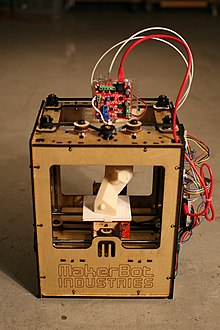
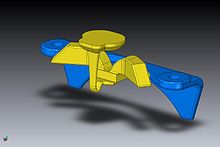
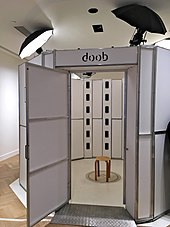
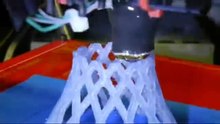
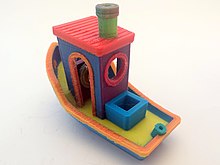
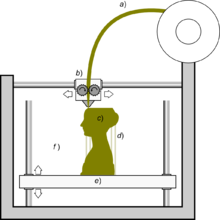


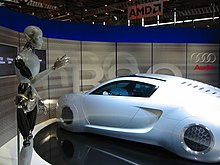

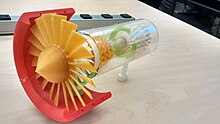
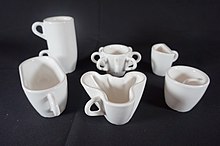













No comments:
Post a Comment